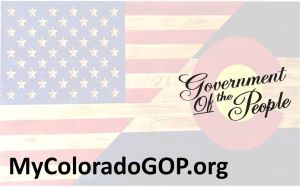By Charles Heatherly
Myth #1: Unaffiliated voters are independent spirits open to persuasion to support the best candidate regardless of party affiliation.
FACT: A 2019 Pew Research Center report revealed that all but 7% of unaffiliated voters lean Left or Right consistently in their voting habits. 93% have identifiable, consistent partisan loyalties.
Myth #2 Unaffiliated voters with partisan leanings are balanced R & D and that balance does not change much over time.
FACT: According to a 2019 Pew Research Center report, the percentage of Democrat-leaning unaffiliated voters grew from 11% in 1994 to 17% in 2018-- a 6/11 or 54% increase, while Republican-leaning unaffiliated voters remained constant at only 13%. So, as the total number of Unaffiliated voters grows relative to R & D voter registration, so too does the number of Democrat-leaning unaffiliated voters.
Myth #3: Motivating and facilitating unaffiliated voters' participation in a Republican Primary will lead to their voting for the Republican in candidate in the General Election.
FACT: There is not a scintilla of empirical evidence to support that naive belief. It might plausibly be true for that very small percentage of unaffiliated voters who "lean Republican," but is not likely to be true for the 93% of unaffiliated voters who have no such leanings but may nonetheless choose to vote in the Republican Primary for other reasons.
Myth #4 Allowing unaffiliated voters to vote in Republican and Democratic primaries will have no significant effect on the number of voters registering as Republicans or Democrats.
FACT: Since the arrival of the Open Primary in Colorado in 2016, both Republican and Democratic voter registration numbers have diminished as a percent of total voter registrations. In the 30 days from August 1, to September 1, 2021, Republican Party voter registrations actually DECLINED over 1,000, while Unaffiliated voter registration INCREASED by over 11,000.
Myth #5: Unaffiliated voters in Colorado are very much "up for grabs" because they have traditionally split their General Election ballots about 50-50 between Republican and Democratic candidates.
FACT: Colorado Unaffiliated voters in the most recent General Elections have split about 60-40 Democrat over Republican in major statewide races such as Governor or U.S. Senator.
Myth #6: The small Democrat advantage in party-orientation among Unaffiliated voters does not affect election results very much because the turnout rate among Unaffiliated voters is very low compared to Republican and Democratic voter turnout.
FACT: Unaffiliated voter turnout has been steadily increasing. In November of 2020, over 1.2 million Unaffiliated voters cast ballots, surpassed a 70% turnout for the first time in history, and thus, for the first time, unaffiliated ballots cast outnumbered both Republican and Democratic ballots.
Myth #7: Regardless of the partisan leanings of a majority of Unaffiliated voters, since they are less politically active they remain a minor, inconsequential factor in Colorado general elections.
FACT: Now that Colorado's Unaffiliated voters are receiving 1.7 million Republican and Democratic Primary ballots in the mail, they are being targeted in both primary and general elections -- and in fact, were the deciding factor in several Republican primary elections in June of 2020.
